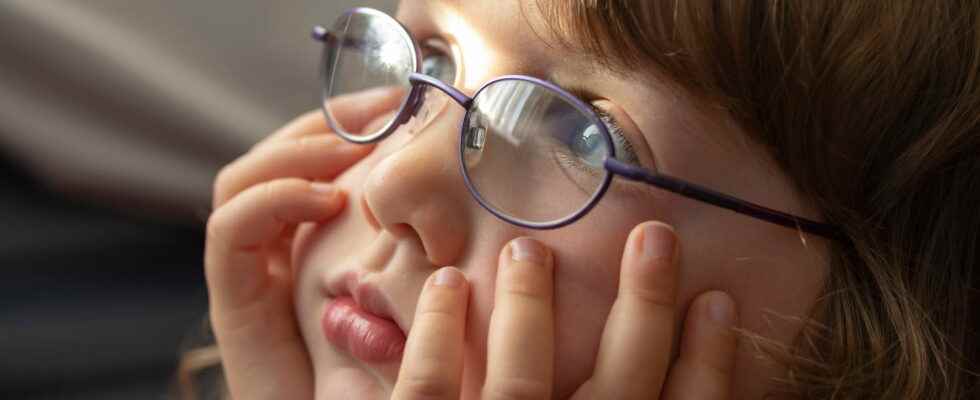Seeing blurry up close can be a symptom of farsightedness. This visual defect, quite common (especially in children), is generally explained by an eye that is too short. What fix? Is an operation possible?
Hyperopia leads to decreased visual acuity linked to a eye too short. It is frequent and physiological in children up to 4-5 years old. It can lead to a eyestrain and headaches.
Hyperopia is a ophthalmological abnormality linked to an eye that is too short. The eye is forced to adapt to have a clear image which can lead to headaches, reading fatigue, sometimes a strabismus. Asymptomatic moderate hyperopia is physiological in the first years of life, until the age of 4-5 years. She often gets awkward around forty, when people’s ability to adapt visually decreases with age. The near vision becomes blurred.
farsighted poorly distinguishes objects located too close because accommodation has its limits. The diagnosis is often suggested in children or young adults who complain of near blurred visionofitchy red eyes or of headache at the end of the daydue to the visual fatigue generated by theconstant effort of accommodation. However, as distance vision is compensated by accommodation, the rapid screening test for letter vision disorders carried out at 5 meters shows no abnormality. If hyperopia can occur from an early age, children have an ability to accommodate to this visual defect that they naturally compensate for. In this case, they do not complain of visual disturbances. Generally, only children with strabismus are detected early in the context of ophthalmic treatment. Conversely, latent hypermetropia only truly reveals itself around the age of 35 or 40 when the subject can no longer compensate for his visual defect.
Ophthalmologists distinguish three levels of farsightedness :
- low hyperopia is between 0 to 2 diopters,
- the average hyperopia is between 2 and 6 diopters,
- high hyperopia is between 6 and 20 diopters.
Hyperopia can come from two factors:
- A lens defect which, due to its too flat shape, is not convergent enough;
- One eye too shortmore common in young children due to the smallness of their eye.
In very young children, for example, it is possible that an excessive accommodation effort is the cause of so-called accommodative strabismus. On the other hand, in people suffering from strong hypermetropia, the effort of accommodation can lead to a feeling of fatigue, headaches and visual discomfort. Uncorrected vision becomes weaker near and far when the power of accommodation decreases, around age 40.
Hyperopia is evaluated by the ophthalmologist, which allows to define the strength of the corrective glasses or lenses to be used.
The laser operation hyperopia consists in bulging the cornea to increase its curvature, so that the image of an object is formed on the retina (point of sharpness). The most commonly used technique is LASIK with or without femtosecond. It treats hypermetropia from 1 to 6 diopters. In cases of very strong hypermetropia, refractive surgery consists of placing a lens inside the eye, called an “intraocular implant”.
“Hyperopia can be corrected perfectly”
Like many visual defects, farsightedness is corrected perfectly. Several alternatives are available to the farsighted to correct his failing near vision:
- The wearing of glasses with so-called “convergent” or “positive” lenses, the principle of which is to make the rays converge on the retina. They are more or less thick in the center depending on the importance of hyperopia. However, technological progress has made it possible to considerably reduce the thickness of these glasses to guarantee greater aesthetic comfort.
- Wearing corrective lenses, whose effectiveness seems to be better than that of glasses.
It is possible to prevent the aggravation of farsightedness by carrying out screening tests regularly in children (often performed at school) and by consulting an ophthalmologist at the slightest visual disturbance, in adults and children.
Source: Childhood Vision Screening. Ministry of Health. 2009
